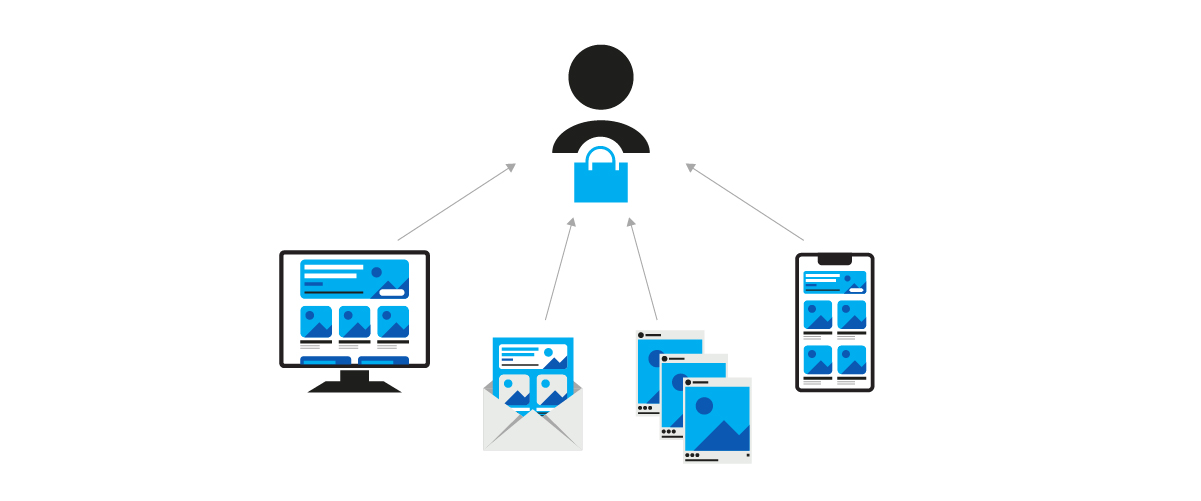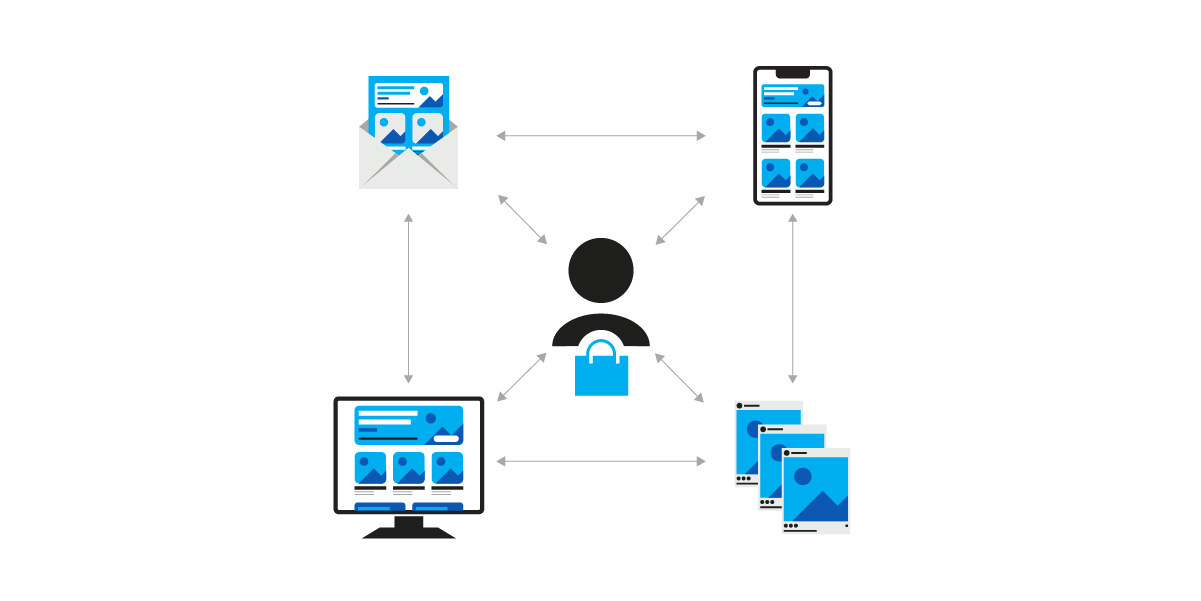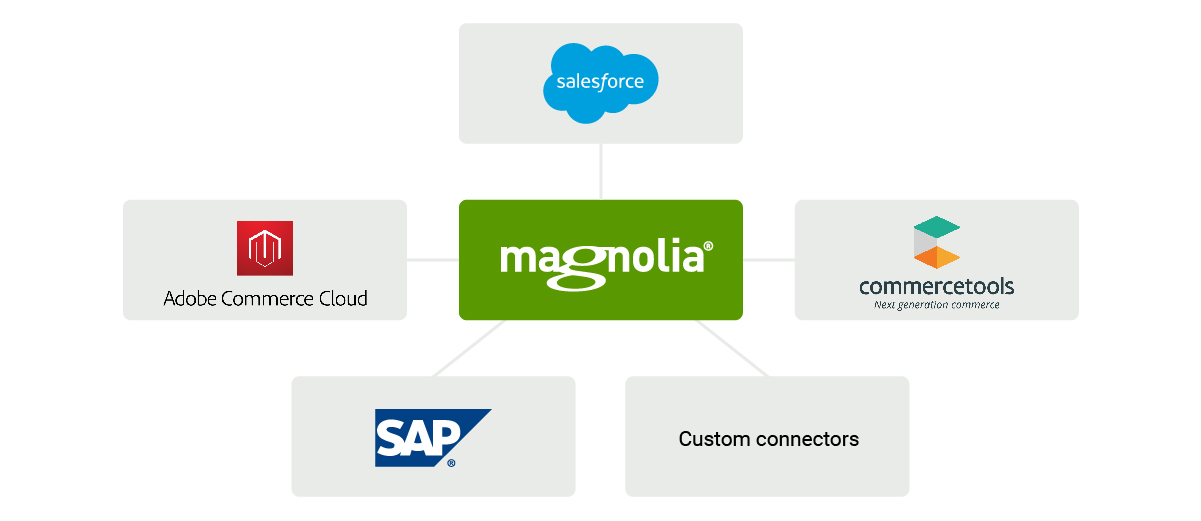- Jul 4, 2024
- --
Embracing the power of omnichannel ecommerce: Transforming the future of retail
Experience Magnolia in action
Experience Magnolia's key features firsthand in an interactive product tour.
Take a tour nowOmnichannel ecommerce focuses on providing a seamless and unified customer experience across multiple channels. Today's customers increasingly expect it regardless of which digital device or platform they use.
Omnichannel ecommerce not only delivers a more connected customer experience but also elevates brand visibility and recognition.
Some of the benefits of omnichannel commerce include better data-driven insights, enhanced brand loyalty, and increased sales due to better market penetration.
Magnolia supports businesses' omnichannel strategies. It is enterprise-ready and makes it easy for brand teams to roll out personalized content globally across multiple sites, languages, and channels.
The rapid evolution of technology has significantly reshaped the retail landscape, with omnichannel ecommerce emerging as the most impactful trend. Gone are the days when consumers relied solely on brick-and-mortar stores for shopping. In today's digital era, omnichannel ecommerce has become a driving force in the retail industry, enabling seamless interactions between consumers and retailers across multiple touchpoints.
Buyers, either B2C or B2B, have settled into using a mix of sales channels to interact with suppliers., according to McKinsey’s B2B Pulse research. If in 2016, customers used five channels during their decision journey, in 2019, the number already rose to 7.5 channels, and in 2021, it reached 10 channels.
When it comes to how effective these channels are, McKinsey research shows that in late 2021, 32% of B2B buyers already ranked e-commerce as the single most effective channel, compared to in-person transactions at 23% in early 2021.
This article explores the concept of omnichannel ecommerce, its benefits, challenges, and how it is transforming retail.
Understanding omnichannel ecommerce
To grasp omnichannel ecommerce, we’ll take time to understand single-channel and multichannel e-commerce and how one or the other can impact a business.
Single-channel and multichannel ecommerce are two distinct approaches to online retailers that cater to different business strategies and customer preferences. Let's explore each concept briefly.
Single-channel ecommerce

Single-channel ecommerce is a business model by which retailers sell their products or services through a single online channel. This could be their ecommerce website or a specific online marketplace. Single-channel ecommerce simplifies operations as retailers manage and optimize a single platform. It allows targeted marketing efforts tailored to that channel's specific audience and features. However, single-channel ecommerce may be limited in reach and customer engagement, as it relies solely on one channel, such as a website or a social media account.
Multichannel ecommerce

Multichannel ecommerce involves selling products or services through multiple channels simultaneously - company websites, online marketplaces, mobile apps, social media platforms, and brick-and-mortar stores - but these channels largely operate independently of each other.
Multichannel ecommerce expands the reach and customer base, as businesses can connect with customers with different shopping preferences. It offers improved customer experiences by providing flexibility and accessibility across multiple touchpoints. However, managing multiple channels can introduce complexity, including inventory synchronization, operational coordination, and resource requirements. For example, each channel has its own tailored strategy, and for each channel the results are tracked separately.
Omnichannel ecommerce

Omnichannel ecommerce takes multichannel retail further by integrating and synchronizing all channels to provide a seamless and consistent customer experience. It focuses on creating a unified and interconnected shopping journey across various online or offline touchpoints. With an omnichannel strategy, customers can switch between channels seamlessly while maintaining continuity.
For example, they can start browsing on a mobile app, continue shopping on a laptop, and complete the purchase in-store. Omnichannel ecommerce leverages data and technology to personalize customer interactions, offers, and recommendations across channels. It aims to eliminate channel silos, giving customers a cohesive experience and enabling retailers to gain valuable insights into customer behavior and preferences.
What is the reason for omnichannel?
The principal motive for adopting an omnichannel approach in ecommerce is to satisfy customers' growing needs and provide them with a seamless and uniform shopping experience across multiple channels.
Customer convenience: In today's digital age, customers expect convenience and flexibility in shopping experiences. Omnichannel ecommerce allows customers to interact with a brand and purchase through their preferred channels, whether a company website, mobile app, social media platform, or physical store. It eliminates barriers and enables customers to engage with a brand conveniently, enhancing the overall customer experience.
More reach and market penetration: With the proliferation of digital platforms and the global nature of ecommerce, businesses can reach a wider audience by adopting an omnichannel approach. Businesses can tap into different customer segments and geographical markets by leveraging multiple channels. This broader reach increases brand visibility and opens new growth opportunities.
Data-driven insights: The omnichannel approach generates a wealth of data that businesses can leverage to gain insights into customer behavior, preferences, and trends. These insights enable businesses to optimize marketing campaigns, personalize experiences, and identify areas for improvement.
Competitive advantage: Businesses implementing omnichannel strategies gain a competitive advantage by providing a superior customer experience. Customers increasingly expect consistency and convenience across channels, and businesses that meet these expectations stand out from their competitors. An omnichannel approach can help businesses differentiate, attract, and retain customers in a crowded marketplace.
What are the possible challenges of implementing an omnichannel strategy?
The benefits of omnichannel commerce are without a doubt compelling, but successfully implementing a strategy requires overcoming some hurdles.
Data integration: Integrating data from different channels and touchpoints can be complex, as each channel may have its own systems and data formats. Retailers must invest in robust data management systems and technologies to ensure seamless integration and accessibility of data across the organization.
Channel consistency: Providing a consistent experience across multiple channels requires a cohesive branding and messaging strategy. Ensuring consistent pricing, product information, and promotions can be challenging, especially when different teams or systems manage each channel. Retailers must establish clear guidelines and invest in technology solutions that enable centralized management and control.
Technology investment: Implementing an omnichannel strategy necessitates investment in technology infrastructure, such as robust ecommerce platforms, inventory management systems, CRM solutions, and analytics tools. Retailers must carefully assess technology needs, choose the right partners, and allocate resources to support a seamless omnichannel experience.
How does Magnolia support the omnichannel strategy?
Maximizing the benefits of omnichannel ecommerce while overcoming its challenges is crucial for business success. Simplify your omnichannel strategy with a headless solution to achieve seamless integration and enhanced customer experiences.
Magnolia is a headless CMS that helps businesses achieve their customer experience goals (omnichannel included).It is uniquely positioned to provide the central platform to create, manage, and orchestrate dynamic customer experiences for any channel across different markets and languages.
First, Magnolia acts as a central content pool — a single source of truth for all brand content and data from connected systems (i.e., forms from marketing automation tools, analytics data from third-party analytics), standardized in reusable format for any channel. Magnolia's multisource feature and Connector Packs have a unique integration pattern that ensures all connected content and data is available to editors and other business users in one UI as if they were Magnolia native.
Editors can mix, match, and create experiences using a visual editor that provides full WYSIWYG editing and preview, even in headless scenarios. Brand editors can shape any experience as close to the glass as possible, and they’ll be able to preview it before publishing, just as it will look to the end users. The result is a high-quality and flawless end user experience.
Secondly, while not obstructing brands from integrating with specialized third-party tools, Magnolia has built-in features for personalization (headless-ready) and A/B/n testing. Editors can optimize engagement and conversions in one workflow and learn in continuous cycles without leaving the Magnolia UI and wasting time switching contexts between tools.
Search Engine Optimization (SEO) is also an important concern. Magnolia has built-in features to ensure all SEO basics are in place (URLs, metadata, linking, etc.), plus an out-of-the-box integration to Siteimprove for more advanced SEO, compliance, and accessibility features. For SEO considerations when going headless, you can implement Server-Side Rendering (SSR) / Static-Site Generation (SSG) with best practices and blueprints from Magnolia for various frontend frameworks.
Finally, Magnolia is enterprise-ready and makes global rollouts of personalized content across multiple sites, languages, and channels a breeze for brand teams. Advanced multi-site management with Live Copy, automatic translations, publishing workflows, and versioning — these capabilities help ensure that any content, on any page, in any language is always relevant, up to date, and consistent for a seamless customer experience.
The retail marketer’s guide to content management systems
What is the state of CMS for the retail sector? Download our whitepaper to get your copy of the retail marketer’s guide to web content management.
How does Magnolia solve the challenges of implementing omnichannel ecommerce?
Magnolia, a robust content management system (CMS), offers the solutions below to address the challenges that arise while implementing omnichannel ecommerce.
Content management and consistency
One of the main challenges in omnichannel ecommerce is maintaining consistent content across multiple channels. Magnolia provides a unified content management system that allows businesses to manage and update content from a central location. Content updates, such as product descriptions, images, pricing, and promotions, can be made in real-time and automatically synchronized across all channels. This ensures consistency and accuracy in messaging and branding across different touchpoints.
Channel customization and personalization
Each channel in an omnichannel strategy may have unique requirements and customer preferences. Magnolia's flexible architecture enables businesses to customize and personalize the experience for each channel. Through Magnolia, businesses can easily configure different templates, layouts, and content variations based on the specific needs of each channel. This customization capability optimizes the customer experience for different devices, platforms, and touchpoints.
Integration with ecommerce platforms

Integrating various ecommerce platforms and systems is a significant challenge in implementing omnichannel ecommerce. Magnolia integrates with leading ecommerce platforms like commercetools, Salesforce Commerce Cloud, and SAP Commerce Cloud. This integration allows businesses to synchronize product catalogs, inventory, pricing, and customer data between Magnolia and the ecommerce platform. By leveraging these integrations, businesses can manage content and the customer experience within Magnolia while utilizing the robust transactional capabilities of the ecommerce platform.
Data synchronization and customer profiles
A key aspect of omnichannel ecommerce is maintaining consistent customer data and channel profiles. Magnolia enables businesses to create and manage comprehensive customer profiles by integrating customer relationship management (CRM) systems and other data sources. This integration ensures that customer data, such as purchase history, preferences, and behavior, is synchronized across channels, providing a holistic view of each customer. These customer profiles enable businesses to deliver personalized experiences and targeted marketing campaigns based on individual preferences and behaviors.
Marketing automation and campaign management
Magnolia offers built-in marketing automation and campaign management capabilities. Through Magnolia, businesses can automate email campaigns, segment customers, deliver personalized content, and track campaign performance. This streamlines executing omnichannel marketing initiatives and ensures consistent messaging and branding across all customer touchpoints.
Analytics and reporting
Magnolia uses the analytics connector to provide robust analytics and reporting capabilities to measure the performance of omnichannel initiatives. Businesses can track and analyze customer behavior, conversion rates, revenue, and other key channel metrics. This data-driven approach allows businesses to continually identify trends, optimize campaigns, and make informed decisions to improve the omnichannel customer experience.
In summary, Magnolia helps solve the challenges of implementing omnichannel ecommerce by providing unified content management, channel customization and personalization, integration with ecommerce platforms, data synchronization, marketing automation, and analytics capabilities.
Magnolia empowers businesses to streamline operations, maintain consistency, deliver personalized experiences, and measure the success of their omnichannel strategy.
Watch this 10-minutes Magnolia demo and see how easily you can create content-rich shopping experiences - delivered to any channel.












